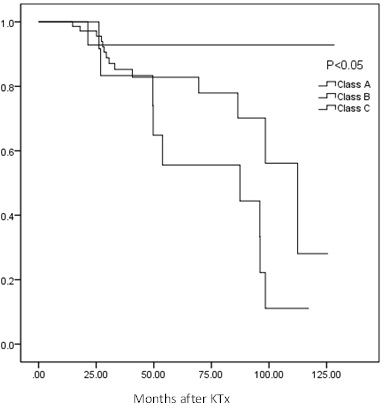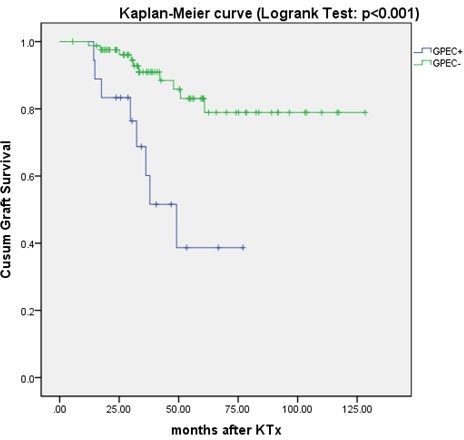Characteristics of Polyomavirus Nephropathy in Renal Transplant Recipient in China: 10 Year Experience
Department of Organ Transplantation, First Affiliated Hospital, Sun Yat-sen University, Guangzhou, China.
Meeting: 2018 American Transplant Congress
Abstract number: C196
Keywords: Kidney transplantation, Polyma virus
Session Information
Session Name: Poster Session C: Kidney: Polyoma
Session Type: Poster Session
Date: Monday, June 4, 2018
Session Time: 6:00pm-7:00pm
 Presentation Time: 6:00pm-7:00pm
Presentation Time: 6:00pm-7:00pm
Location: Hall 4EF
Background: Till now regular BKV screening after kidney transplantation is not performed in many transplant centers in China. As several noninvasive methods were available in our center since 2006, we have diagnosed many consultation cases of Polyomavirus nephropathy (PyN) all over China in recent 10 years.
Methods Clinical-pathological data from 183 cases of PyN diagnosed by biopsy during 2006-2017 in our hospital were collected and analyzed.
Results The mean time of diagnosis was 16.5 months (2.2 ~ 63.9) post transplant, with 86% occurring within 2 years. At diagnosis, BK viruia was detected in 97.0% recipients with viral loads of 1.5 x 109 (0 ~ 9.0 x 1011)copies/ml, and BK viremia in 79.2% , 1.8 x 104 (0 ~ 2.1 x 107)copies/ml. 15 patients already lost their graft at biopsy and the other 168 patients reserved graft function with serum creatinine of 194.8 ± 72.0 umol/L. According to American Society of Transplantation classification, the proportion of stageB3 and C was 22% and 11%. Immunohistochemistry ever showed infection of glomerular parietalepithelial cells (GPEC) in 25 (13.7%) patients. 4 cases of JCVAN were diagnosed. Combined primary glomerulopathy occurred in 19 patients (12 IgA nephropathy, 7 FSGS). After 20.1 (3.7 ~ 109.6) months of follow-up, another 18.8% patients lost their graft. The average serum creatinine of the 77% patients with graft function was 197.1 + 109.3 umol/L. 5-year allograft survival of stage A, B, C were 92.9%, 82.8% and 55.6%, respectively. The 1, 3, 5 year graft survival rates in GPEC+ group were only 92.9%, 53.9% and 40.4%, respectively.
The 1, 3, 5 year graft survival rates in GPEC+ group were only 92.9%, 53.9% and 40.4%, respectively. Conclusions Characteristics of PyN in China include the followings. The diagnostic time is always late. Severe histological pattern with diffuse infection is not rare with worse outcome. Combined primary glomerulopathy should be aware.
Conclusions Characteristics of PyN in China include the followings. The diagnostic time is always late. Severe histological pattern with diffuse infection is not rare with worse outcome. Combined primary glomerulopathy should be aware.
CITATION INFORMATION: Huang G., Chen X., Chen L. Characteristics of Polyomavirus Nephropathy in Renal Transplant Recipient in China: 10 Year Experience Am J Transplant. 2017;17 (suppl 3).
To cite this abstract in AMA style:
Huang G, Chen X, Chen L. Characteristics of Polyomavirus Nephropathy in Renal Transplant Recipient in China: 10 Year Experience [abstract]. https://atcmeetingabstracts.com/abstract/characteristics-of-polyomavirus-nephropathy-in-renal-transplant-recipient-in-china-10-year-experience/. Accessed December 17, 2025.« Back to 2018 American Transplant Congress
